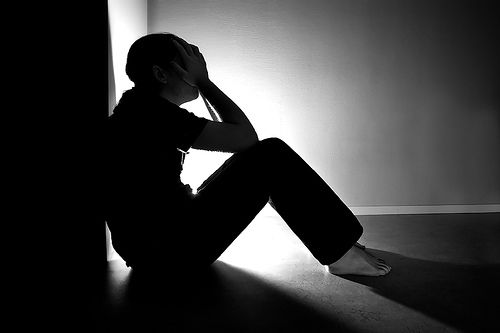

Anyone who knows me knows that I’m a huge advocate for helping others. I believe in reaching out, giving a helping hand, providing emotional support, and contributing financially. I believe each individual can make the world a better place by helping others in some way. On the other hand, it’s relatively clear that anything, including help, can be done in excess. So, what does it mean to help until it hurts?
When Helping Hurts
Helping aids progression, creates an environment of positivity, adds value to the life of another human being. Helping lifts you up, but doesn’t hold you up; it allows you to hold yourself up as best you can. Helping at its best is supportive, not controlling; strengthening, not debilitating; mobilizing, not paralyzing. When helping hurts, it is no longer helping. It is enabling.
Enabling is often disguised as helping, but it’s quite the opposite. Enabling creates a sense of powerlessness, often discouraging and demotivating the person who needs help.
Are you wondering if you are the enabler for someone you know or love? If you’re not sure, ask yourself these questions about your attempts to help:
- Are my actions helping this person to feel more self-empowered?
- Are the circumstances staying the same, worsening or improving?
- Is this person doing his absolute best to help himself?
- Are my actions motivated by fear? Pity? Guilt?
- Am I helping this person to take advantage of her full potential?
- What good has come from my help?
- What harm has come from my help?
When helping ceases to inspire and empower; it becomes enabling. Your answers to the questions above should help you determine if you’ve crossed that fine line.
Why Enabling Is Helping That Hurts
If you are an enabler to someone, it is likely because you see them as a victim. But guess what? Enabling IS a type of victimization.
When people aren’t challenged to do as much as they possibly can to help themselves, they learn to constantly look for answers, remedies, solutions, and fixes outside of themselves. They begin to feel powerless, useless, incapable, needy. Sadly, the more they feel that way, the more they attract circumstances that prove them right. The more they attract those negative circumstances, the worse they feel. The worse they feel, the worse it gets. This cycle is a vicious one.
Before you can help someone break this cycle, you must see them in ways they don’t yet see themselves. The prerequisite, however, is to understand why you’re engaging in enabling behavior in the first place.
1. The Guilt Factor
One of the most common reasons people give for enabling is that they feel too guilty to stop. Let’s dissect that excuse.
Definition of Guilt (noun)
a) the state of having committed an offense
b) remorse caused by feeling responsible for some offense
If you are enabling self-destruction, self-pity, fear, and self-doubt; that is the offense. There is far more cause for guilt in what you’re doing (enabling) than there is in stopping it. You’ll need to wrap your mind around the fact that your style of helping hurts in order to move past the guilt of changing the enabling behavior that your loved one has come to expect.
2. Unconscious (or Subconscious) Self-Interest
I know it seems highly unlikely that helping another person could be motivated by self-interest but bear with me as I explain why this is often the driving force behind helping that hurts.
If you know you’ve had a pattern of enabling behavior, take a moment to consider what YOU get out of what you’re doing. On some level, does it feel good to have someone rely on you to this extent? Does it bring you a sense of safety and reassurance to know that you’re needed? Is it a way to keep them close? To maintain control? To feel useful?
Do you enjoy the feeling of self-righteousness that comes with compulsive “helping”? Does it help you to feel better about yourself, to feel worthy? Do you get much-desired sympathy for being so self-sacrificing? Do you get to throw your own pity party because you do so much, going overboard, getting nothing in return? Does it allow you to make amends for wrongs you’ve done to this person or someone else?
There is nothing wrong with deriving benefits from helping others, but you must really look at your motives when your helping is hurting someone else.
Once you know exactly what you’re getting from the enabling behavior, you can uncover the real issue. You can learn to meet your own needs in a way that is less destructive to you and others.
A Family Example of Enabling
An example of helping that hurts can be seen in a growing number of households across America. Parents are enabling (not helping) their children, stripping them of everything they need to create success in life. These young people go to school when (or if) they want. They bring home whatever grades they want. They smoke, drink, do drugs and use profanity in the parent’s home. Free room and board, no rules, no expectations—life is grand. These children grow up to expect nothing of themselves.
All too often, the enabling continues into adulthood. They live off mom and dad (or whoever will enable them), continuing to do as they please. Instead of working, they get handouts. Instead of getting an education, they get high. Instead of creating a life for themselves, they take whatever they can get without effort.
When/if they do finally get out on their own, everything seems so much harder than it has to be. Why? Because they only know how to do what they’ve been encouraged, pushed, taught and enabled to do all their lives. Absolutely nothing!
Truly Helping Others
If you really want to help someone, envision them in a more favorable light than they can see. See them at their best, even if they can’t show it to you. Help them to access their own strength, to reach their full potential. Challenge them to own up to who they really are—to feel the joy of personal empowerment and self-confidence. In everything you do for another, do it with this vision of them firmly planted in your mind’s eye.
As you continue reaching out to help others, I hope you’ll keep in mind the difference between helping and enabling. Always remember to look at your intentions, your motives, your actions and your outcomes. If you find that you need to make some changes, let your hope and faith, not your guilt and fears, guide the way.










